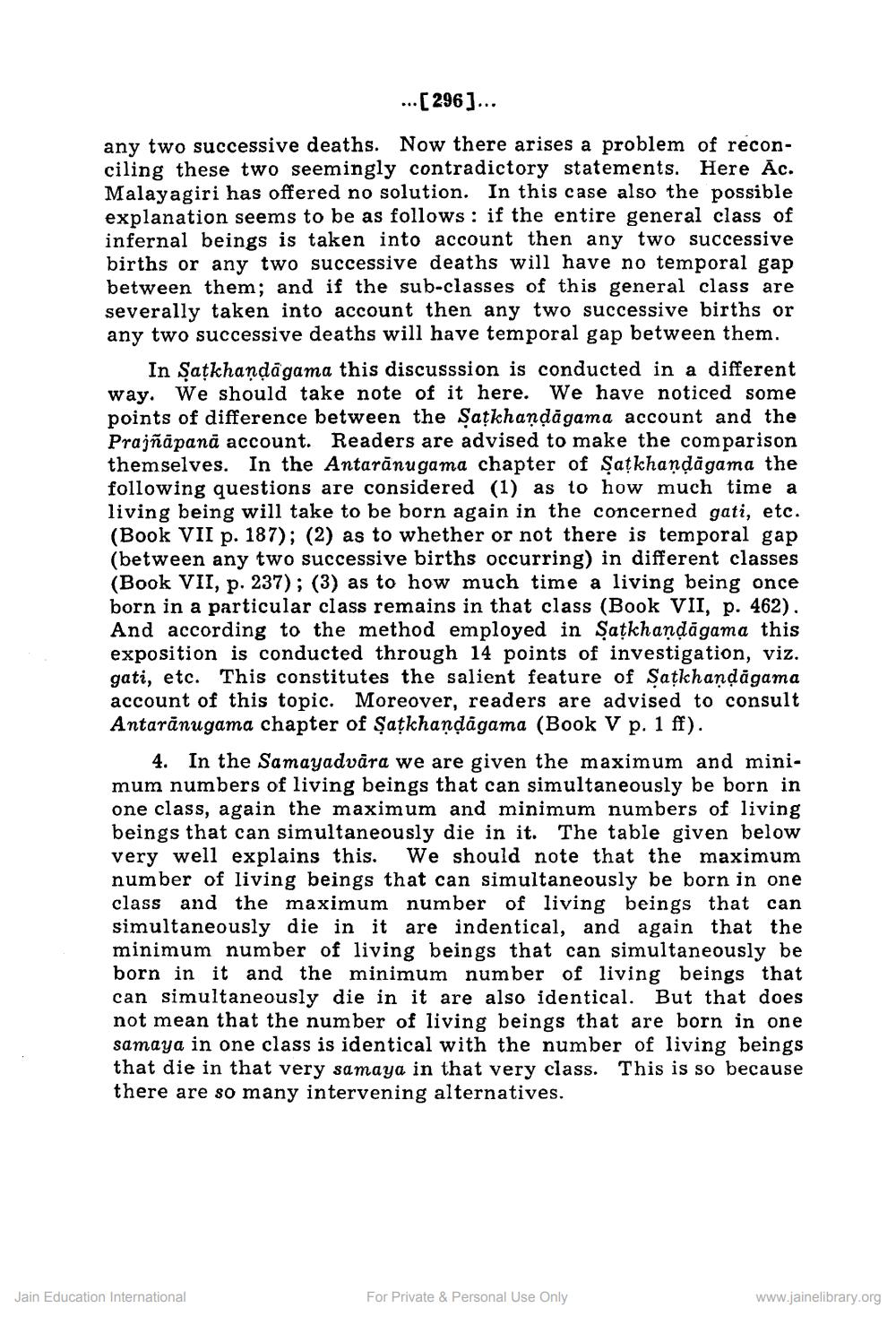________________
...[296]...
any two successive deaths. Now there arises a problem of reconciling these two seemingly contradictory statements. Here Ac. Malayagiri has offered no solution. In this case also the possible explanation seems to be as follows: if the entire general class of infernal beings is taken into account then any two successive births or any two successive deaths will have no temporal gap between them; and if the sub-classes of this general class are severally taken into account then any two successive births or any two successive deaths will have temporal gap between them.
way.
In Satkhandagama this discusssion is conducted in a different We should take note of it here. We have noticed some points of difference between the Satkhanḍāgama account and the Prajñāpanā account. Readers are advised to make the comparison themselves. In the Antarānugama chapter of Satkhaṇḍāgama the following questions are considered (1) as to how much time a living being will take to be born again in the concerned gati, etc. (Book VII p. 187); (2) as to whether or not there is temporal gap (between any two successive births occurring) in different classes (Book VII, p. 237); (3) as to how much time a living being once born in a particular class remains in that class (Book VII, p. 462). And according to the method employed in Saṭkhaṇḍāgama this exposition is conducted through 14 points of investigation, viz. gati, etc. This constitutes the salient feature of Satkhaṇḍāgama account of this topic. Moreover, readers are advised to consult Antarānugama chapter of Saṭkhaṇḍāgama (Book V p. 1 ff).
4. In the Samayadvāra we are given the maximum and minimum numbers of living beings that can simultaneously be born in one class, again the maximum and minimum numbers of living beings that can simultaneously die in it. The table given below very well explains this. We should note that the maximum number of living beings that can simultaneously be born in one class and the maximum number of living beings that can simultaneously die in it are indentical, and again that the minimum number of living beings that can simultaneously be born in it and the minimum number of living beings that can simultaneously die in it are also identical. But that does not mean that the number of living beings that are born in one samaya in one class is identical with the number of living beings that die in that very samaya in that very class. This is so because there are so many intervening alternatives.
Jain Education International
For Private & Personal Use Only
www.jainelibrary.org




